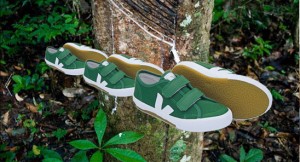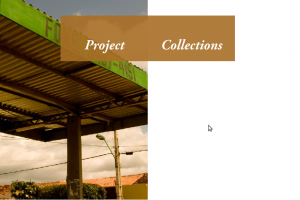 Sneakers, or basket ball shoes, are an unlikely candidate for building a successful ethical brand for various reasons: First of all, it is a market that with at least 4 dominating global brands is basically saturated or so it seems; second, the basic ingredients of a sneaker – fabric or leather, rubber, labour, plus the design – are simple at first sight, but at the same time face all the difficult issues in each of the areas; thirdly, there’s the eternal price dilemma – how much are consumers willing to pay for a brand that is not one of those big ones?; and finally, the advertising bubble: global brands buy substantial air time and advertisement space, with VIPs supporting their sales efforts. Can you compete, and be ethical on top of it all?
Sneakers, or basket ball shoes, are an unlikely candidate for building a successful ethical brand for various reasons: First of all, it is a market that with at least 4 dominating global brands is basically saturated or so it seems; second, the basic ingredients of a sneaker – fabric or leather, rubber, labour, plus the design – are simple at first sight, but at the same time face all the difficult issues in each of the areas; thirdly, there’s the eternal price dilemma – how much are consumers willing to pay for a brand that is not one of those big ones?; and finally, the advertising bubble: global brands buy substantial air time and advertisement space, with VIPs supporting their sales efforts. Can you compete, and be ethical on top of it all?
Launching successfully a ‘mainstream’ new sneakers brand is already a tall order; achieving it with an ethical one – with organic cotton, native rubber, vegetable tanned leather and fair labour conditions in the factories – seems to be impossible.
And yet VEJA has achieved exactly this. The ‘How’ is down to a 1000 reasons, notably thoroughness and commitment, but luck and timing certainly is also among them.
Before Veja however, there was research: The brand’s founders spent the year 2003 travelling around the globe while looking into, analysing and criticising CSR related achievements of important French companies: Lafarge, La Redoute, Novethic, Imerys, Carrefour, Schneider Electric, EDF, and Accor. The project was called ‘Juste Planète‘ (French for: Just the planet), and their insights and experiences were documented in public on a dedicated website.
Importantly: despite above mentioned companies financing their trip – remember: in 2003 there hardly was any research or hard data available about the effectiveness and outcomes of CSR programmes – the team managed to remain independent and largely uninfluenced by their sponsors’ business or PR considerations.
Their ‘tour du monde’ left the ‘Juste Planète’ team disappointed with what really was going on. What was expected to be a research trip into how business can make a difference in developing countries and marginalised communities, concluded with that most of what was going on was in reality nothing but corporate charity in different incarnations, but very little that would bring sustainable long-lasting improvements.
But: they had also discovered areas with a lot of potential – Brazil in particular – , with all the resources, and that only would need tapping into.
7 years on and 5 years after the foundation of the company, with Veja we have one of the most interesting – and successful – ethical brands around, founded on a combination of both idealistic ideas as well as pragmatic business sense.

Who ever hence clicks on the left ‘Project’ keyword, knows that there is something more to the brand, and wants to find out details. Fairly ingenious realisation of ‘do good but don’t constantly talk about it’, and in that an excellent example of customer focused web design.
Commercial success speaks for itself, as it means that the product finds consumers that appreciate the design at the price point in question. But what about the ‘project Veja’?
Well, let’s put it this way – Veja is the first brand I’ve come across that not only – and evidently – points out what they do, but also the limitations they encounter and where they themselves see potential for improvement. Historically that’s the development of Veja: from use of organic cotton from cotton communities in the North of Brazil, followed by a collaboration with rubber tappers in the Amazon (fascinating story in its own right, cf. the summary of a recent event at the Hub Kings Cross)
Pointing out the need for further efforts explicitly seems like a small detail, but it is in fact an important message. One of transparency. They know what they’ve achieved, but equally how much more there remains. It’s a journey after all. ‘Feel free to travel where our suppliers are and have a look yourself. It actually would be telling a far better story than anything we can tell you.’
Everything perfect? The world never is. There are things I’d love to see happen with Veja both, on the consumer side as well as on their supply chain side.
A track-and-trace system for instance, where each individual shoe can be tracked as to who tapped the rubber, the farm the cotton came from, the factory worker who made the sole or the shaft of the shoe. And yes, I know it’s complex.
Or more transparency for where their leather comes from, assuring us that the cattle was not only kept and slaughtered in conditions, but also that it was not fed with soy or corn stemming from a patch of logged rain forest. And finally, an evaluation of the extent and how their efforts in reality do have the positive impact the founders hoped for.
My guess it that some of these points are on the way of being looked at, and with that there will be more learning and a further step in a process of continuous improvement.
—
I would like at this point to thank Aurélie Dumont from Veja’s London office, for kindly giving her time to answer questions and let me have a look behind Veja’s way of working.

